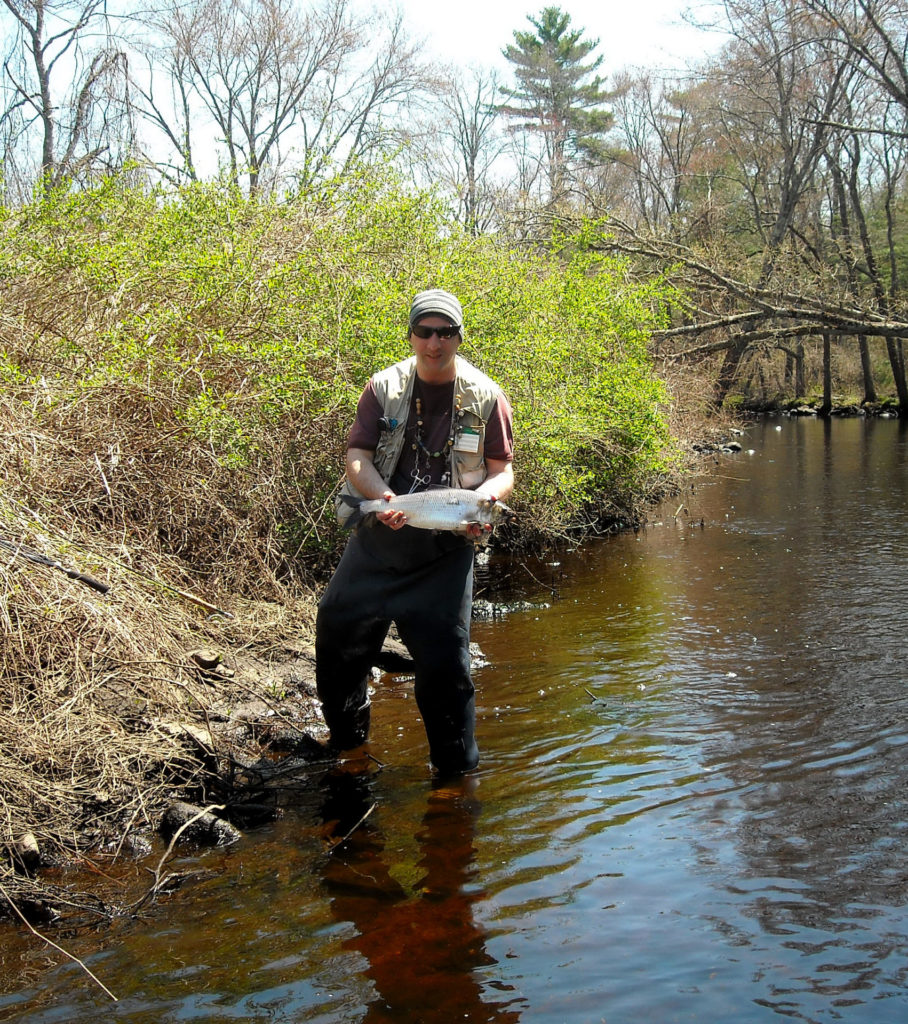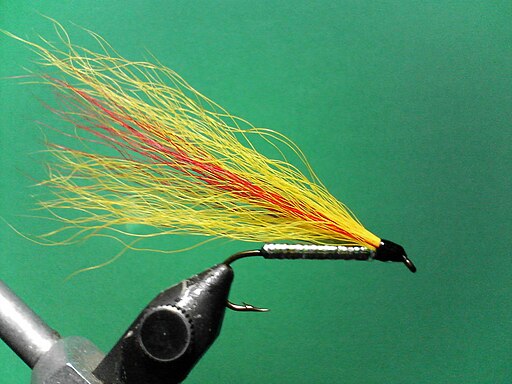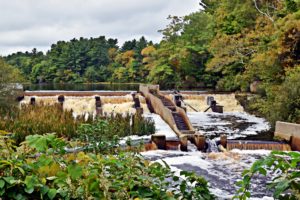
By Warren Winders, Southeastern Mass. Trout Unlimited
Contrary to our reputation for secrecy, we anglers are actually a gregarious bunch. And we probably achieve our seasonal height of sociability when the American shad are running in our rivers.
You may have noticed that springtime in the North and South Rivers is marked by a sequence of migrations. Birds begin to arrive from the south to establish their nesting territories along the shores of the rivers. Then one day you hear a high-pitched whistle and look up to see an osprey hovering above the stream. That is when you know that the river herring and shad are making their way into the river.
The other sign that the herring and shad are near is the migration of winter-weary anglers to the Pembroke canoe launch on the Indian Head River. This first part of the annual angler migration rarely involves fishing. Rather, it amounts to a small group of people milling around at the launch site muttering questions like: “Seen anything?” Meanwhile, most eyes are longingly focused downstream. They are looking for the telltale wake or swirl made by a returning shad.
Depending on the weather, this first shad sighting takes place sometime between mid-April and the first day of May. The shad will usually wait until the water rises above 50 degrees Fahrenheit to move up to their spawning water, and just as with the herring, a cold snap will slow or stop the run, pushing the shad back into the depths until things warm up.
So, just what is a shad? What manner of fish will cause a group of adults to spend their precious time standing in a cold, spring drizzle while staring at a river?
ABOUT AMERICAN SHAD (Alosa sapidissima)
American shad are the largest members of the herring family (Clupeidae). Male shad average 2 to 3 pounds at maturity, while females average 4 to 5 pounds. Shad of over 8 pounds have been caught in the Indian Head River and shad of 15 pounds have been recorded. The 8-pound shad caught in the Indian Head River was a female that had returned to the river multiple times to spawn.

American shad will spend 3 to 5 years at sea before returning to their natal river to spawn for the first time. While at sea shad are “filter feeders” that capture plankton as they swim in schools through the open ocean. The native range of the American shad extends from Florida to Labrador, and at one time, along with river herring, they spawned in almost every river along the East Coast. It is said that, at some point during its life, almost every East Coast American shad will visit the plankton rich waters of the Bay of Fundy located in Maritime Canada.
The range of American shad was extended when shad, and striped bass, were introduced to the Pacific Coast during the late 19th Century with the result that American shad (and stripers) now run up into rivers from San Francisco Bay north to British Columbia.
Shad, along with blueback herring, spawn in the moving water of rivers above the line of tidal influence. The ideal water temperature for spawning is 61 degrees, and spawning takes place during the low light period of evening. Shad are what they call “broadcast” spawners, which means that the female will swim about near the surface releasing her eggs accompanied by a male, or males releasing their milt. After being fertilized, the eggs fall to the bottom of the stream where they hatch into “yolk sack” fry within a week or so. Because of predation, the rate of survival to the juvenile stage is very small, often less than 1%. The survival rate of eggs and young shad also depends on pH, water temperature and dissolved oxygen. The healthier the stream, the higher the rate of survival.
By fall, juvenile shad begin to lose their tolerance for freshwater and begin drifting downstream to the ocean where, along with other members of the herring family, they become a key species of the vast marine food chain. The role of shad in the food chain is the transfer of energy from plankton on up the chain to an array of predators like striped bass, bluefish and whales. When shad return to their rivers to spawn, they transfer the energy of the ocean’s plankton bloom to the land. Otters, mink, raccoons, bears and, of course, humans will all feed on shad, and through scat and scattered bones, will share the energy that shad bring from the sea with streamside plants. Just as with Pacific salmon, it may be possible to find the DNA of shad in the tops of swamp oaks and red maples growing near the Indian Head River.
FISHING FOR AMERICAN SHAD
Roughly translated, sapidissima means ‘most delicious’, this as opposed to the name for hickory shad, which is Alosa mediocris. We don’t need to know much Latin to figure out that hickory shad are not valued as a food fish, while American shad certainly are – or were.
In 2002, John McPhee published a book about American shad titled, “The Founding Fish.” While his opening premise, that it was shad and not alewife herring that the Pilgrims found in Plymouth’s Town Brook is wrong, or at best a stretch, he does discuss the commercial importance of shad as a valued food fish from the Nation’s beginning up to the present time. Shad were prized both for their sweet flesh and for their roe and the commercial harvest of shad made it the most important river fishery in the state of Massachusetts. But by 1867, when the Massachusetts Fishery Commission was formed, shad were disappearing from the Connecticut, Merrimack and other rivers due to dams and pollution. One of the chief tasks of the newly formed commission was to find ways to restore the shad fishery. In his book, The History of Scituate, Samuel Deanes laments that, as early as 1830, the herring, shad and bass of the North River were in steep decline due to the proliferation of dams.
Today, in Massachusetts, shad are treated as a sport fish, and are often referred to as the “Poor Man’s Salmon.” To some extent, shad have been restored to both the Connecticut and Merrimack Rivers, and the runs of shad in the North and South Rivers, although limited by the continued presence of dams, still provide the unique opportunity to fish for American shad in relatively small and wadeable streams. As anyone who has hooked up with a freshly returned shad in the Indian Head River knows, shad can be worthy of their comparison to salmon.

Shad are most often fished for with shad darts or flies. Shad darts are specially designed, weighted lures that come in a variety of sizes and bright colors. While shad darts are intended for use with a spinning rod, in their smaller sizes, they can also be used with a fly rod. Flies for shad should be brightly colored, weighted and relatively small. The smaller size, both in darts and in flies is desirable to avoid snagging the shad. It is illegal to intentionally snag shad, or any other game fish – and shad will take (bite) a smaller dart or fly before it will take a larger fly or lure. And shad will often take traditional trout flies, like the Mickey Finn, or a Copper John nymph.
Like salmon, shad do not eat while they are in their spawning rivers. And being filter feeders, there probably isn’t much in freshwater that would serve as food for them anyway. So we don’t really know why shad will strike at, or nip at a fly or a shad dart. It may be a defensive reaction, or as some suggest, a memory from before they left the river to go to sea.
SHAD FISHING THEN AND NOW

When I began fishing for shad in the Indian Head back in the 1970s, the custom was to fish for shad after dark. If you were young, and single, shad fishing could be, and for me was, a nightly after work celebration of the river. We would arrive at our chosen spot, a place, usually at the head of a pool, where we could intercept the shad as they moved up the stream. We would set up our Coleman Lantern and the cooler containing whatever junk food we’d brought for dinner, and then we’d stand in the river drifting our flies as the sun went down and the night birds began to sing. As the sunset, a chill would descend on the river and the darkness would envelop us until the scope of our world seemed confined to the small circle of light, and its marbled reflection in the river flowing around us, thrown by the hissing lantern. As darkness descended, the sound of the river heaving itself over the dam upstream seemed to grow louder until it became a low, unrelenting thunder. And the shad began to move, making wakes on the slick surface of the pool, or swirling abruptly to erupt through the mirror of the river.
Often the shad would bump against our wadered legs, or swim between our legs as they fought their way up river. We would watch as they powered up through the shallow riffles with their backs out of the water until they made their way to the next pool, and then we could hear them moving up through the next riffle that was hidden beyond the glow of our lantern.
And some times we’d hook a shad, and if it was a big roe shad, we’d have to chase her down stream into the darkness all of the while hollering “Fish on!” and “Coming down!” to let the anglers down stream know that you and a very irate shad were coming and that they should reel in their lines and get out of the way. The consequence for not reeling in and moving aside was usually a mess of tangled lines as the shad made sure that she wrapped the line she was attached to around everything else in the river. It was fun, as long as you didn’t fall in and break your rod.
It has been over 20 years since I last fished for shad at night. As I grew older, the thrills and spills of night fishing lost their appeal. Part of that has to do with getting older and a decreasing tolerance of the involuntary night swimming that comes with declining agility. And part of it stems from the fact that you can catch more shad during the day. And as more people discover this, the old Indian Head custom of night fishing is fading away.
My friend, Joe Danubio, is a daytime shad fisher who has developed a very effective method of catching shad with flies that is similar to nymphing for trout. And I’ve seen some very effective spin fishers in recent years.

An assessment of the Indian Head’s shad population found that it is relatively small, a probable consequence of the limited spawning water that is available below the Luddam’s Ford Dam at West Elm Street. Because of the limited population, fishing for shad in the North and South Rivers is now only allowed on a catch and release basis.
I rarely fish for the shad now, except as a part of a yearly ritual that includes waiting for their return in April, or a morning spent standing in the pool where I used to fish for shad at night back in the 70s. And during the day I get to see what I was missing at night, things like the spawning lamprey eels, and the giant snapping turtles that prowl the river bottom scavenging for dead shad and herring. It’s still good to stand in the river with the water flowing around me. At such times I think about a spring day when the dam will be gone, and the shad will have their river again.
The Largest Alosid (Spenserian sonnet) by Sara P. Grady
When gentle showers swelled the river deep
And serviceberry heralded the run,
The evenings filled with lustful frogs a-peep
And dinners eaten with the fading sun.
With strength of swimming not to be outdone,
The shad in schools pursued their destiny,
In silver flashing chaos all were one,
And demonstrated their anadromy.
Their journey took them from the salty sea,
To swim this stream where we now wade and cast,
The fight upstream was no hyperbole,
Where osprey, bass, or heron could repast.
So “sapidissima” to beast or man,
We hope at least a few complete their plan.
